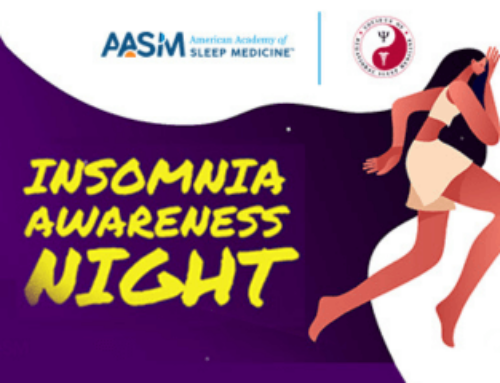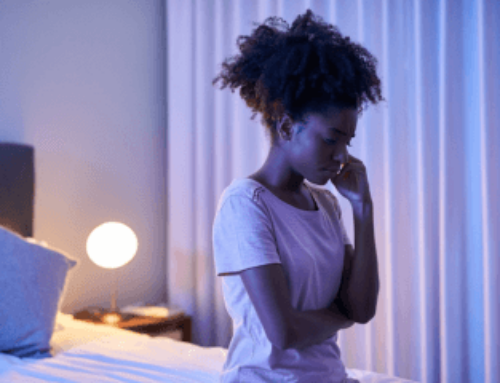DARIEN, IL – More than two-thirds of high school students in the U.S. are failing to get sufficient sleep on school nights, according to a 2016 study from the Centers for Disease Control and Prevention (CDC). Based on this alarming number, the National Healthy Sleep Awareness Project is urging sleep-deprived teenagers to recharge by seizing the opportunity for an extra hour of sleep that comes with the end of daylight saving time on Nov. 6.
The American Academy of Sleep Medicine (AASM) recommends that teens should sleep 8 to 10 hours per night on a regular basis to promote optimal health. When well-rested, teens are more likely to be healthy, energetic and have a positive attitude toward life.
“Using the end of daylight saving time to get an extra hour of sleep can help sleep-deprived teens begin to re-prioritize the importance of sleep in their lives,” said Dr. Ronald Chervin, president of the AASM and spokesperson for the National Healthy Sleep Awareness Project. “Although one night of extra sleep is not enough to correct chronic sleep restriction, it can be the start of a new routine that enables teens to get the sleep they need to look, feel and perform their best.”
Opportunity Offered with Additional Hour of Sleep
Insufficient sleep in teens can have a negative impact on their grades, athletic performance, and mental and physical well-being. It also can influence their decision-making, putting personal and public safety at risk. For example, CDC data show that students who reported sleeping 7 hours or less on school nights were more likely to report texting while driving, drinking and driving, and riding with a driver who had been drinking. Prior CDC research also found that insufficient sleep among teens was associated with higher odds of cigarette and marijuana use, alcohol consumption, sexual activity and suicidal thoughts.
Furthermore, a recent survey by Students Against Destructive Decisions (SADD) and Liberty Mutual Insurance found that more than half of licensed teens (56 percent) admit to having driven when feeling too tired to drive their best, and nearly one in 10 teens report that they have completely fallen asleep at the wheel. For teens this risk of drowsy driving is particularly significant, as motor vehicle crashes are the leading cause of death to teens in the U.S., according to the CDC.
“Healthy sleep is a vital fuel that gives a teenager the best chance to learn, perform, interact, enjoy, and just plain sparkle,” said Chervin. “Unfortunately, teenagers often obtain less sleep every year as they progress through high school, to the point of chronic sleep deprivation. We need to take advantage of any opportunity to help get our young adults off to a better, healthier start in their lives.”
Parents, Take Note of Teen Sleep Habits
Teens who enjoy an hour of extra sleep after the end of daylight saving time may feel motivated to maintain an earlier nightly bedtime moving forward. The AASM advises parents and caregivers to help their teen by modeling healthy sleep habits in the home and making sleep a household priority.
Here are a few tips for parents of teens:
- Help your teen maintain a consistent bedtime that allows at least 8 hours of nightly sleep.
- Keep the TV, computer, phone and video game system out of your teen’s bedroom.
- Set a technology curfew, requiring your teen to shut off all devices at least 30 minutes to 1 hour before bedtime.
- Work with your local school board to set a high school start time that allows teens to get the healthy sleep they need.
For more information about sleep and teens, visit the “Sleep Recharges You” campaign page at www.projecthealthysleep.org.
CONTACT: Rebecca Raudabaugh, L.C. Williams & Associates, 800-837-7123 or 312-565-4604, rraudabaugh@lcwa.com
About the National Healthy Sleep Awareness Project
The National Healthy Sleep Awareness Project was initiated in 2013 and is funded by the Centers for Disease Control and Prevention through a cooperative agreement with the American Academy of Sleep Medicine. The project involves collaboration with the Sleep Research Society and other partners to address the sleep health focus area of Healthy People 2020, which provides science-based, 10-year national objectives for improving the health of all Americans. The sleep health objectives are to increase the medical evaluation of people with symptoms of obstructive sleep apnea, reduce vehicular crashes due to drowsy driving and ensure more Americans get sufficient sleep. For more information, visit www.sleepeducation.org/healthysleep.




